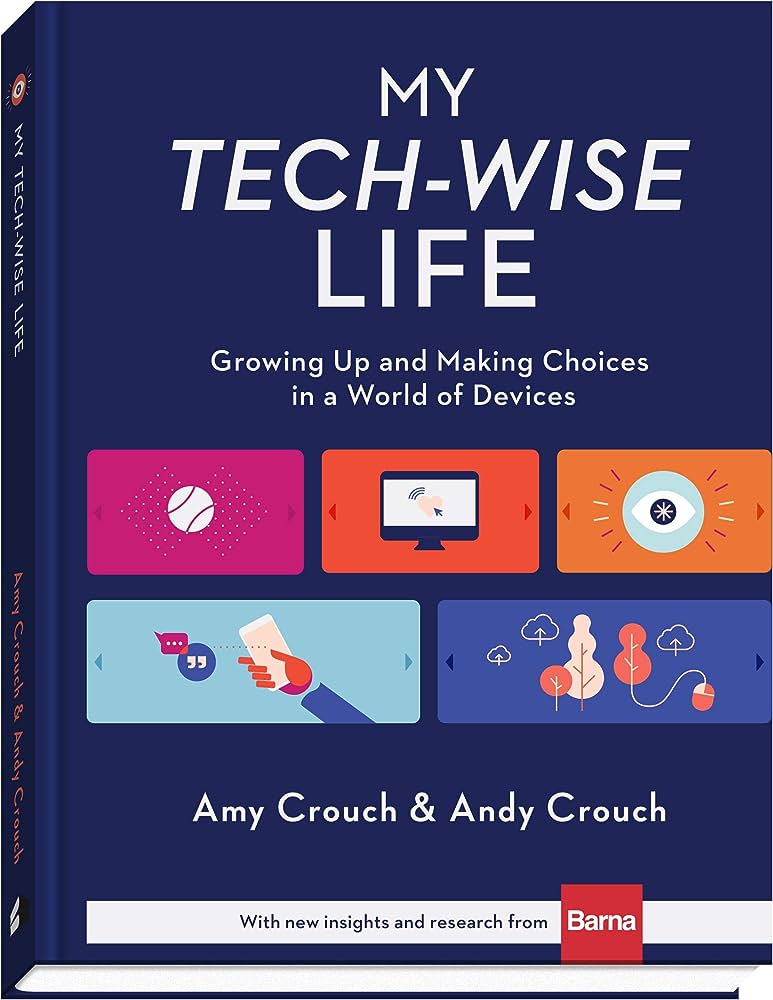In “The Tech Diet for your Child & Teen: A Comprehensive Recap with Lessons, Stories, and Practical Examples,” you’ll discover a wealth of valuable insights and practical advice for navigating the digital age with your child or teen. This comprehensive recap of the book offers a deep dive into the lessons learned, sharing poignant stories and providing numerous practical examples to help you apply the strategies in your own life. With an abundance of quotes and illustrative anecdotes throughout, this recap not only informs but also inspires. By the end, you’ll be armed with a newfound perspective on technology’s impact on young minds, armed with actionable techniques to establish healthier habits, and motivated to foster meaningful connections with your child or teen.
Chapter 1: Understanding the Impact of Technology on Children

The addictive nature of technology
In today’s digital age, it’s no secret that technology has become deeply woven into our daily lives. It has transformed the way we communicate, gather information, and entertain ourselves. However, it’s essential to recognize the addictive nature of technology, especially for children. The easy accessibility and instant gratification that technology offers can trigger a compulsive desire to constantly be connected and engaged with screens.
According to the American Academy of Pediatrics, excessive screen time can lead to physical health problems such as obesity and poor sleep quality. Moreover, it can affect mental well-being, leading to increased levels of stress, anxiety, and depression. Understanding the addictive nature of technology is the first step in addressing its impact on children.
The effects on social development
One of the most significant concerns regarding technology’s influence on children is its effects on social development. Excessive screen time can hinder the development of essential social skills, such as effective communication, empathy, and conflict resolution. When children spend excessive time in front of screens, they miss out on valuable face-to-face interactions that are crucial for building and maintaining relationships.
Research suggests that excessive screen time can lead to social isolation and an inability to effectively interact with peers. It is essential for parents and caregivers to recognize the importance of encouraging real-life interactions alongside technology usage to ensure healthy social development.
The impact on cognitive abilities
Another area of concern when it comes to technology’s impact on children is its effect on cognitive abilities. Excessive screen time may hinder the development of critical thinking skills, problem-solving abilities, and creativity. While technology can offer educational content and stimulating experiences, excessive reliance on screens can limit a child’s exposure to real-world experiences and impede their cognitive growth.
It is crucial for parents and caregivers to strike a balance between screen time usage and activities that promote cognitive development, such as reading, engaging in creative outlets, and participating in hands-on learning experiences.
Chapter 2: Setting Limits and Boundaries
Creating a technology routine
Setting clear and consistent boundaries around technology usage is essential for maintaining a healthy balance in a child’s life. Creating a technology routine involves establishing specific times during the day when screens are allowed, as well as time limits for usage. By creating a predictable schedule, children can develop a sense of structure and learn to manage their time effectively.

Establishing screen-free times and zones
In addition to setting specific times for technology usage, it is important to establish screen-free times and zones. Designate certain areas, such as bedrooms and mealtimes, as technology-free zones to promote meaningful interactions and quality time with family members. Encouraging device-free activities before bedtime can also contribute to better sleep quality.
Setting age-appropriate usage guidelines
Setting age-appropriate usage guidelines is crucial to ensure children are engaging with technology in a safe and healthy manner. Different age groups require different levels of supervision and restriction. Younger children may need more closely monitored usage, while older children may benefit from increased independence with technology. Guiding children to understand their own limits and teaching responsible online behavior is essential to promote healthy digital habits.
Chapter 3: Cultivating Healthy Tech Habits
Encouraging physical activity and outdoor play
While technology offers various sedentary activities, it is essential to encourage physical activity and outdoor play for a child’s overall well-being. Engaging in sports, outdoor games, or simply spending time in nature can promote physical fitness, enhance motor skills, and improve mental health. By balancing screen time with physical activities, children develop healthy habits and maintain a well-rounded lifestyle.
Promoting face-to-face interactions
Technology often replaces face-to-face interactions, making it crucial for parents and caregivers to actively promote and prioritize real-life social interactions. Encourage children to engage with family members, friends, and classmates through face-to-face conversations, group activities, and playdates. Building strong social connections can significantly contribute to a child’s emotional well-being and social development.

Teaching responsible online behavior
In today’s interconnected world, teaching children responsible online behavior is paramount. It is essential for parents and caregivers to educate children about the potential risks and dangers associated with the online world. Teaching them the importance of privacy, respectful communication, and being cautious of cyberbullying can help children navigate the online environment safely and responsibly.
Chapter 4: Balancing Screen Time with Other Activities
Introducing alternative hobbies and interests
To balance screen time, it is important to introduce children to alternative hobbies and interests. Encourage them to explore activities such as reading, painting, playing a musical instrument, or engaging in sports. By nurturing a variety of interests, children have the opportunity to develop new skills, broaden their horizons, and discover their passions beyond the digital realm.
Encouraging reading and creative outlets
Reading is a powerful tool for expanding a child’s knowledge, imagination, and language skills. Encouraging reading habits from an early age can help children develop a love for books and cultivate critical thinking abilities. Additionally, supporting creative outlets such as writing, drawing, or crafting can foster self-expression and boost cognitive development.
Engaging in family activities
Family activities play a significant role in balancing screen time and promoting meaningful connections. Plan regular family outings, game nights, or shared recreational activities that involve everyone’s participation. By engaging in these activities, children will understand the importance of quality time with loved ones and learn to appreciate non-screen-related enjoyment.
Chapter 5: Nurturing Emotional Well-being

Managing stress and anxiety
Excessive screen time has been linked to increased levels of stress and anxiety in children. It is crucial for parents and caregivers to help children manage stress and develop healthy coping mechanisms. Encourage open discussions about their worries and fears, and provide them with strategies such as deep breathing exercises, mindfulness techniques, or engaging in relaxing activities to alleviate stress.
Fostering empathy and emotional intelligence
Technology can sometimes hinder the development of empathy and emotional intelligence by limiting real-time interactions and the ability to decipher non-verbal cues. To counteract this, parents and caregivers should actively foster empathy and emotional intelligence by encouraging children to understand and relate to others’ emotions. Engaging in activities that promote empathy, such as volunteering or participating in community service projects, can significantly contribute to a child’s emotional growth.
Building healthy relationships
Technology should not replace the importance of building healthy relationships in a child’s life. Encourage children to foster and maintain relationships offline, whether it’s with family members, friends, or mentors. Help children understand the value of face-to-face connections, active listening, and meaningful conversations. Nurturing healthy relationships contributes to a child’s overall happiness and emotional well-being.
Chapter 6: Technology and Educational Growth
Utilizing technology as a learning tool
While excessive screen time can have negative effects, technology can also be harnessed as a valuable learning tool. Utilize educational apps, online resources, and interactive programs to supplement traditional learning methods. By integrating technology into educational settings, children can develop essential digital literacy skills while enhancing their academic growth.

Choosing educational apps and programs
When selecting educational apps and programs, it’s crucial to ensure they align with your child’s age, interests, and academic needs. Look for apps and programs that provide interactive and engaging content, promote critical thinking, and have a strong educational foundation. Monitoring your child’s usage and progress will also enable you to make informed decisions regarding their screen time.
Monitoring academic progress
Technology can aid in monitoring a child’s academic progress and identifying areas of improvement. Use online platforms or educational software that provide feedback and assessments to track your child’s performance. Regularly communicating with teachers and staying involved in their educational journey will help ensure that technology is being used in a way that enhances their learning experience.
Chapter 7: Overcoming Challenges and Resistance
Addressing resistance and pushback
Children may resist the implementation of strict technology boundaries, especially if they are accustomed to excessive screen time. Addressing their resistance requires patience, understanding, and clear communication. Explain the reasons behind the limitations, highlight the potential benefits, and actively involve them in decision-making processes to increase their sense of ownership and cooperation.
Dealing with peer pressure
Children often face peer pressure to conform to technology usage norms. It is essential to educate them about the potential risks and consequences of excessive screen time. Encourage open discussions about peer pressure and guide them in making informed decisions that prioritize their well-being. Focus on building their self-esteem and confidence, empowering them to resist negative influences.
Handling online dangers and cyberbullying
The online world poses various risks and dangers for children, including cyberbullying, exposure to inappropriate content, and online predators. It is vital for parents and caregivers to stay informed about online safety measures and teach children strategies for staying safe. Educate children about the importance of privacy settings, responsible online behavior, and the significance of reporting any concerning or harmful online incidents.
Chapter 8: Real-life Success Stories
Case studies of children and teens benefitting from a tech diet
Real-life success stories provide valuable insights and inspiration for parents and caregivers navigating the challenges of implementing a tech diet for their children. These case studies showcase the positive outcomes that can result from striking a balance between technology usage and other activities. Highlight stories of children who have experienced improved academic performance, enhanced social skills, and personal growth through moderation and healthy tech habits.
Transformation and growth through technology moderation
The transformation and growth that can occur through technology moderation are remarkable. Share stories of children who have successfully overcome addiction or excessive reliance on screens by implementing a tech diet. Highlight the positive changes in their well-being, relationships, and overall development, emphasizing the long-term benefits that come from fostering a healthy relationship with technology.
Quotes and anecdotes from parents and caregivers
Incorporating quotes and anecdotes from parents and caregivers adds a personal touch to the narrative and provides relatable experiences for readers. These firsthand accounts can offer valuable perspectives, insights, and encouragement for those embarking on the journey of implementing a tech diet for their children. By sharing stories of both challenges and triumphs, parents can find solace and motivation in knowing they are not alone in their efforts.
Chapter 9: Practical Examples of the Tech Diet
Sample daily schedules and routines
Providing practical examples of daily schedules and routines can guide parents and caregivers in structuring their child’s time effectively. These examples should showcase a balance between screen time, physical activities, educational pursuits, and quality family time. By tailoring these examples to various age groups and individual preferences, parents can establish routines that suit their family’s unique needs.
Screen-time management techniques
Screen-time management techniques offer practical solutions for minimizing excessive device usage. These techniques may include setting timers or alarms, using designated screen-free spaces, implementing rewards and consequences based on screen time adherence, and utilizing parental control apps or features. By implementing these techniques, parents can actively monitor and manage their child’s technology usage.
Family rules and contracts
Creating family rules and contracts is an effective way to establish clear expectations and boundaries regarding technology usage within the household. These rules and contracts can include guidelines such as limited screen time, specified screen-free zones, agreed-upon consequences for breaking the rules, and mutual commitments from both parents and children. By involving children in the rule-making process, they develop a sense of accountability and ownership.
Motivational Tips for Parents and Caregivers
Implementing a tech diet for your child and teen may seem daunting at first, but with dedication and consistency, positive change is possible. Here are some motivational tips for parents and caregivers:
- Lead by example: Model healthy tech habits and demonstrate responsible digital behavior.
- Stay involved and engaged: Actively participate in your child’s technology usage, showing interest and curiosity.
- Find the right balance for your family: Every family is unique, so find the balance that works best for your household.
- Embrace alternative activities: Encourage your child to explore and engage in diverse hobbies and interests beyond screens.
- Prioritize quality family time: Carve out dedicated time to bond and connect as a family without the distractions of technology.
- Encourage open communication: Create a safe space for your child to express their thoughts, concerns, and experiences with technology.
- Acknowledge and celebrate progress: Celebrate the small victories and milestones achieved throughout your tech diet journey.
- Stay informed about the latest tech trends: Continuously educate yourself on emerging technologies and trends to make informed decisions.
- Support your child’s passions and interests: Nurture your child’s talents and hobbies, both within and outside the digital realm.
- Remember that small changes can make a big difference: Start with small, achievable goals and build upon them as you progress on your tech diet journey.
By following these motivational tips and implementing the strategies outlined in this article, you can cultivate a healthy and balanced relationship between your child and technology. Remember, the ultimate goal is to empower your child to be mindful and responsible digital citizens who can navigate the digital world with confidence and resilience.


